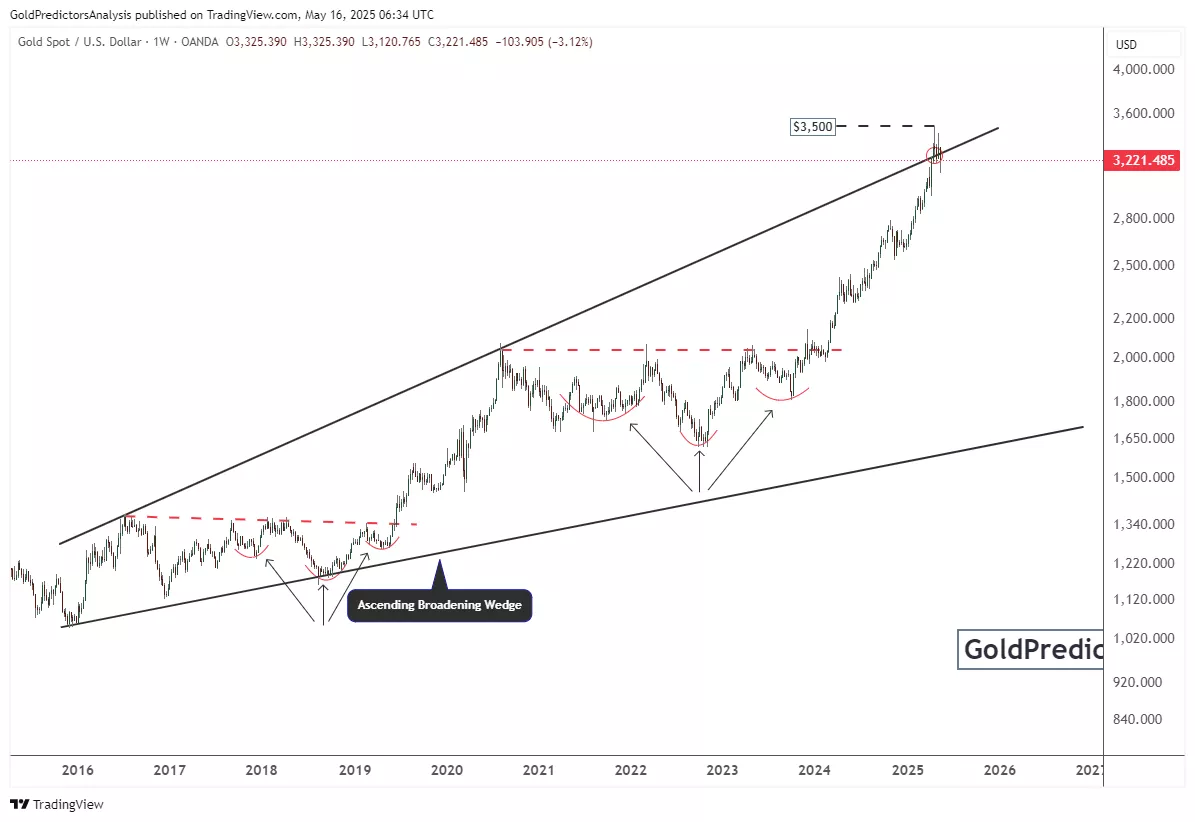Gold Prices Test Resistance As Global Tensions Ease And U.S. Data Weakens
Image Source: Unsplash
Gold (XAU/USD) remains under pressure despite a strong recovery from recent lows. Investors hesitate as safe-haven demand weakens amid easing global tensions. The metal struggles to hold gains. It is weighed down by market optimism over improving trade relations and soft U.S. economic data. Still, multiple macroeconomic and geopolitical factors could lend support and prevent deeper losses.
Gold Prices React to Mixed Economic and Geopolitical Signals
Gold faces a mixed fundamental backdrop. The U.S.-China 90-day trade truce reduces economic uncertainty. This deal also signals reduced safe-haven demand as tensions de-escalate. Talks with other nations add further calm to the global landscape.
However, the U.S. economy shows signs of weakness. Recent data reflect sluggish growth. Retail Sales rose only 0.1% in April, far lower than the 1.7% seen previously. Investors now expect more interest rate cuts from the Federal Reserve. This anticipation lowers U.S. Treasury yields and weakens the U.S. Dollar.
A weaker dollar typically supports gold. The yellow metal, being non-yielding, gains appeal when bond yields fall. Yet, global optimism on trade progress and diplomatic meetings between Ukraine, Russia, and the U.S. reduces the urgency for gold as a safety asset.
Geopolitical uncertainty still lingers. Russian President Vladimir Putin’s absence from peace talks keeps risks alive. Investors remain cautious. Any worsening in global tensions could trigger fresh gold buying. But until then, the balance tilts slightly toward reduced demand.
In short, gold fundamentals show opposing forces. Weak U.S. data and lower yields help gold. But easing global risks and trade optimism reduce the urgency for haven buying.
Technical Analysis: Gold Faces Resistance at Key Level While Bullish Structure Holds
The gold chart below shows a long-term Ascending Broadening Wedge pattern. This is a classic continuation pattern. Price action since 2016 fits well within the wedge’s boundaries. The pattern indicates widening volatility but continued upward momentum.
Within this wedge, gold has formed multiple inverse head and shoulders formations. These bullish reversal patterns signaled the start of major rallies. The latest breakout came above the $2,100–$2,200 neckline zone. Since then, gold surged and recently tested the $3,500 resistance.
(Click on image to enlarge)

However, the price is now facing strong resistance at the upper boundary of the wedge. The $3,500 level acted as a psychological barrier. The recent rejection, shown by the red candlestick, suggests profit-taking and the entry of sellers.
Momentum seems to have weakened. The weekly candle indicates a reversal signal, with a long upper wick and a sharp drop to around $3,221. A failure to close above $3,500 confirms resistance. If selling pressure persists, a pullback toward the $2,800 or $2,500 support zone within the wedge is possible.
Still, the broader trend remains bullish unless the lower wedge line is broken. As long as gold stays within this structure, technical traders may look for buying opportunities near support zones and watch for a possible reattempt to break $3,500 in future weeks.
Conclusion
Gold remains caught between opposing fundamental and technical forces. Although weak U.S. economic data and declining yields provide support for gold, easing global tensions and significant resistance near the $3,500 level continue to cap its upside potential. The metal’s broader trend stays bullish, but momentum has weakened. Until a decisive breakout occurs, traders may favor range-bound strategies. Gold’s next move will depend on how global risks and economic signals evolve in the coming weeks.
More By This Author:
Gold Faces Bearish Outlook As Rising Yields And Optimism Reduce Demand
Gold Prices Show Signs Of Recovery Amid Trade Deal Uncertainty And Fed Caution
Gold’s Bull Run Gains Speed On Global Tensions And Dollar Weakness
To receive gold and silver trading signals and premium updates, please subscribe here.
Disclosure: Materials distributed by ...
more



